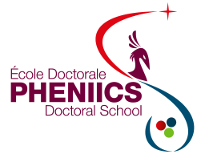Orateur
Maud airiau
(IPN)
Description
Fission barriers of a few MeV induced by shell effects are predicted using macroscopic-microscopic structure model leading to the formation of the so-called island of stability for super heavy nuclei. Its position should be centered around new magic numbers expected at N=184, and between Z=114 and Z=126 depending on the model used for calculation.
Super heavy nuclei are synthesised by fusion-evaporaton process but the cross sections are very low (order of picobarn for element Z=110-118) and decrease with Z, which makes it an experimental challenge. The survival of heavy compound nucleus is indeed deeply threaten by fission process which is the dominant decay mode. Thus a new method for study of super heavy element stabtility has been developped by our team. It is based on fission times measurement using crystal blocking technics [1] or more recently X-rays fluorescence [2].
X-rays emission caused by filling of K-shell electronics hole proves the existence of a super heayv nucleus with long fission times. Those fission times must be higher than the k-shell hole lifetimes, which are about 10-18s for element with Z=120. Fisson times are a sensitive tool to study statbility as they are directly correlated with fission barriers induced by shell effects.
This method has been applied to measure fission times of element Z=124 during the E651 experiment which took place in GANIL (Caen) in march 2014. A uranium 238 beam at 6,6 MeV/A was sent on 2 different isotopic germanium targets. X-ray spectrum is measured thanks to 3 germanium detectors located at a distance of 4cm from the target, corresponding to an over-all solid angle close to 1 sr. Identification of heavy compound nuclei is made possible with detection and Z-identification of the two fission fragments using identification telescopes. Those telescopes are composed of an ionisation chamber followed by a double-striped silicon detector.
[1] M.Morjean et al., Phys. Rev. Lett. 101, 072701 (2008)
[2] M.O. Frégeau et al., Phys. Rev. Lett. 108, 122702 (2012)
Auteur principal
Maud airiau
(IPN)



